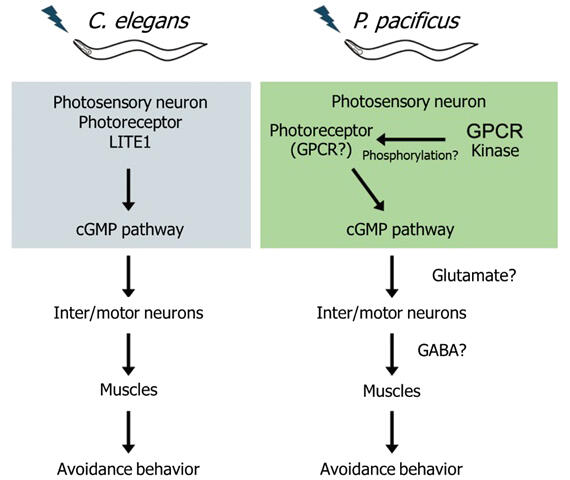Light sensing is a critical function in most organisms. In vertebrates, the photoreceptor protein opsin is responsible for light reception and transmits this information through pathways dependent on the secondary messenger cyclic GMP (cGMP). In contrast, some nematode species exhibit photoresponses despite most nematodes lacking photoreceptor organs like the eyes. Although the photoreception mechanism in "Caenorhabditis elegans," a model organism in biology, has been elucidated to some extent, it remained unclear how photoreception occurs in other nematode species.
A research group led by Associate Professor Misako Okumura of the Graduate School of Integrated Sciences for Life at Hiroshima University has focused on "Pristionchus pacificus," a different nematode species used as a model organism for comparison with C. elegans in evolutionary biology. The research group found that it responds to light using genes different from those used by C. elegans. First, they investigated whether P. pacificus exhibited light-avoidance behavior and found that it responded particularly strongly to blue and ultraviolet light. However, bioinformatics analysis did not identify any candidate genes for known photoreceptor proteins. Therefore, they conducted a "forward genetic screening" to find mutants that did not exhibit light-avoidance behavior among many mutants, and identified genes responsible for photoresponse. They also found that the neurotransmitters GABA and glutamate are required for avoidance behavior.
This study clarified similarities and differences in photoreception between C. elegans and P. pacificus, indicating the possibility that photoreception mechanisms have undergone diverse evolution even in nematodes that live in the dark. Because there are many nematodes that parasitize plants and animals, the findings of this study are expected to contribute to the development of new control methods to prevent the damage caused by nematodes.
Comparison of light-avoidance behavior mechanisms in C. elegans and P. pacificus





